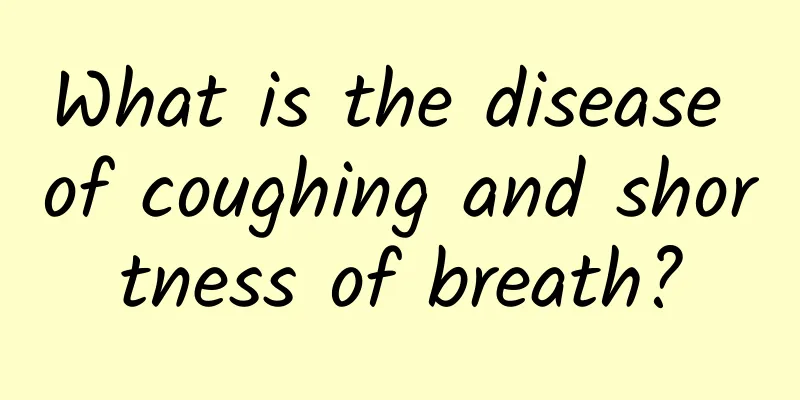A Complete Explanation of Sanjiao Dialectics (A Great and In-depth Article), Be sure to save it!

|
The Sanjiao syndrome differentiation method is a development of the Liujing syndrome differentiation method. The book "Treatise on Warm Diseases" was written using this method. Therefore, although the term "Sanjiao" is the same as the name of the Sanjiao in the internal organs, its meaning and function are different. 1. Symptoms of upper Jiao: Upper Jiao refers to the hand Taiyin lung and hand Jueyin pericardium meridians and organs. The lungs control qi and govern the skin and hair, while the pericardium controls blood and connects to the mind. Warm evil first attacks the lungs, and symptoms include slight aversion to wind and cold, fever, spontaneous sweating, headache, thirst or no thirst, cough, and a floating, slippery and rapid pulse. If the heat spreads to the pericardium, symptoms will include irritability, thirst, coma, delirium, restless sleep, and a crimson tongue. Generally, warm evil spreads from the lungs to the stomach, that is, from the upper burner to the middle burner, which is called "forward transmission". If it quickly spreads from the lungs to the pericardium, that is, from qi to blood, it is called "reverse transmission". 2. Symptoms of the middle burner: The middle burner refers to the two meridians and organs of the stomach (Yangming of the foot) and the spleen (Taiyin of the foot). Yangming is responsible for dryness, and Taiyin is responsible for moisture. When the warm evil in the upper burner spreads to the Yangming meridian, symptoms include high fever, profuse sweating, which gets hotter at noon, red face, heavy breathing, constipation, short and red urine, thirst, and a yellow and rough tongue coating, or a black tongue with thorns. If it spreads to Taiyin meridian, the fever will not be severe but will be more severe in the afternoon, with swelling of the head, heaviness of the body, chest tightness without hunger, nausea and vomiting, difficulty urinating, and a greasy white or slightly yellow tongue coating. During this period, the heat or damp heat is severe, macules or white bumps appear on the skin, and the person may suffer from delirium or a state of confusion. 3. Symptoms of the lower burner: The lower burner refers to the two meridians and organs of the foot Shaoyin kidney and the foot Jueyin liver. The kidney governs yin, and the liver governs blood. When pathogenic heat reaches this stage, it often causes the body fluids to dry up, which in turn leads to further damage to the blood and depletion of yin. In the kidney, the patient is relatively quiet during the day but restless at night; has dry mouth and no desire to drink much; has sore throat or ulcers that make it impossible to speak; has diarrhea and short, red urine. In the liver, there is alternation of cold and heat, pain and heat in the heart, annoyance and depression, occasional dry heaving, or headache and spitting, noiselessness and inability to eat. If it is in the upper part, there will be dry mouth and erosion; if it is in the lower part, there will be diarrhea and heaviness after surgery. Or wind-induced convulsions, cyst retraction, abdominal pain, etc. Comparing the triple burner diagnosis and the six meridian diagnosis, it is not difficult to understand that the triple burner is from top to bottom, which is a vertical relationship, while the six meridians are from the surface to the inside, which is a horizontal relationship. If these two methods are connected together, the vertical and horizontal intersection points are the middle burner in the triple burner and the Yangming and Taiyin in the six meridians, which are originally one place. Therefore, there is no essential difference between the Yangming syndrome of warm disease and the Yangming syndrome of typhoid fever, and between the Taiyin syndrome of warm disease and the Taiyin syndrome of typhoid fever. In particular, the Yangming syndrome after the cold evil turns into heat is basically the same as the warm disease. Only the Taiyin syndrome of warm disease belongs to damp heat, while the Taiyin syndrome of typhoid fever belongs to cold and dampness. The pathogens are different. Looking at the Taiyang in the Six Meridians, it cannot be separated from the upper-burner lungs; similarly, the Shaoyin and Jueyin in the Six Meridians are the lower-burner liver and kidneys. Because of this, although the Sanjiao and Liujing are two methods of disease diagnosis, each has its own strengths as well as common points, and are often used in combination in clinical practice. When using the triple energizer to diagnose syndrome, distinguishing between Wei, Qi, Ying, and Blood is also an extremely important step. Wei, Qi, Ying and Xue come from the triple burner and represent the four levels of shallowness and depth of the disease, so they are usually called Wei, Qi, Ying and Xue. The shallowest is the Wei division, followed by the Qi division, then the deeper is the Ying division, and the deepest is the Xue division. The entry and exit of pathogenic factors through the Wei, Qi, Ying, and Blood are closely related to the transmission and transformation of the Sanjiao. 1. Symptoms of Wei division: The skin and fur are affected by evil, which then enters the lungs. Symptoms include fever, slight aversion to wind and cold, nasal congestion, cough, and a thin white tongue coating. In the early stages of upper-burner diseases, they all belong to the Wei division, which is also a superficial symptom. 2. Symptoms of Qi: When the evil from the exterior invades the interior, symptoms include high fever, thirst, slippery and rapid or strong pulse, and the tongue coating turns from white to yellow. The symptoms of Zhongjiao Yangming all belong to the Qi level, which is also an internal syndrome. 3. Symptoms of the nutritional level: If the disease is in the upper burner and spreads to the pericardium, symptoms include irritability, coma and delirium; or if the disease is in the middle burner, macules, rashes, coma and delirium will appear. These symptoms indicate that the nutrient deficiency is occurring. The most reliable symptom for diagnosis at this time is a red tongue. 4. Symptoms of blood: When heat evil enters the blood, symptoms include madness, coma, delirium, convulsions, macules on the outside, vomiting on the inside, epistaxis, bloody stool, a thin or stringy pulse, and a dark crimson tongue with little fluid. These symptoms, when divided into three burners, are considered lower burner diseases. |
<<: How to treat vulvar itching? Tips for treating vulvar itching in women
Recommend
How to treat favism
If you have favism, you must receive timely and e...
Lumbar MRI of Spondylitis
Nowadays, more and more patients have lumbar spin...
Buried suture double eyelid swelling reduction
Buried suture double eyelid is a relatively commo...
Notes on sensorineural hearing loss
Sensorineural hearing loss can cause great troubl...
What diseases can dandelion cure?
Dandelion is a common wild vegetable. In addition...
What are the eating methods and taboos of Panax notoginseng leaves?
Panax notoginseng is a relatively common traditio...
What causes arm numbness when sleeping on the side?
We all have this feeling: when we sleep, especial...
Six-month-old baby's legs are very weak when standing up
When the child is six months old, the adult can s...
White vinegar for nail fungus
Treating onychomycosis with white vinegar is one ...
Is it okay for women to eat oranges during menstruation?
Oranges are a very common seasonal fruit in our l...
The harm of eating spicy food after medical abortion
After medical abortion, you should strengthen you...
Can a lost voice be restored to normal in one day?
Loss of voice indicates inflammation, and it is i...
How to treat lacunar infarction better
I believe that many friends have not heard of the...
What are the traditional Chinese medicines for treating freckles?
Because once many people's skin develops spot...
The efficacy and effects of cinnamon and its taboos
Cinnamon is the dried bark of a very common plant...









